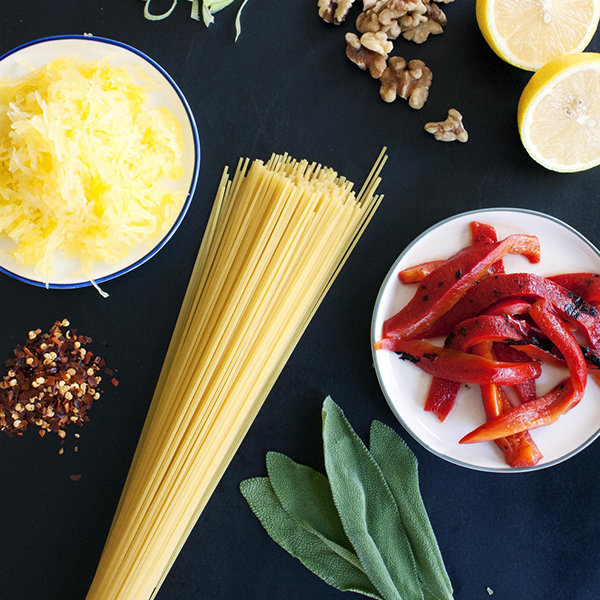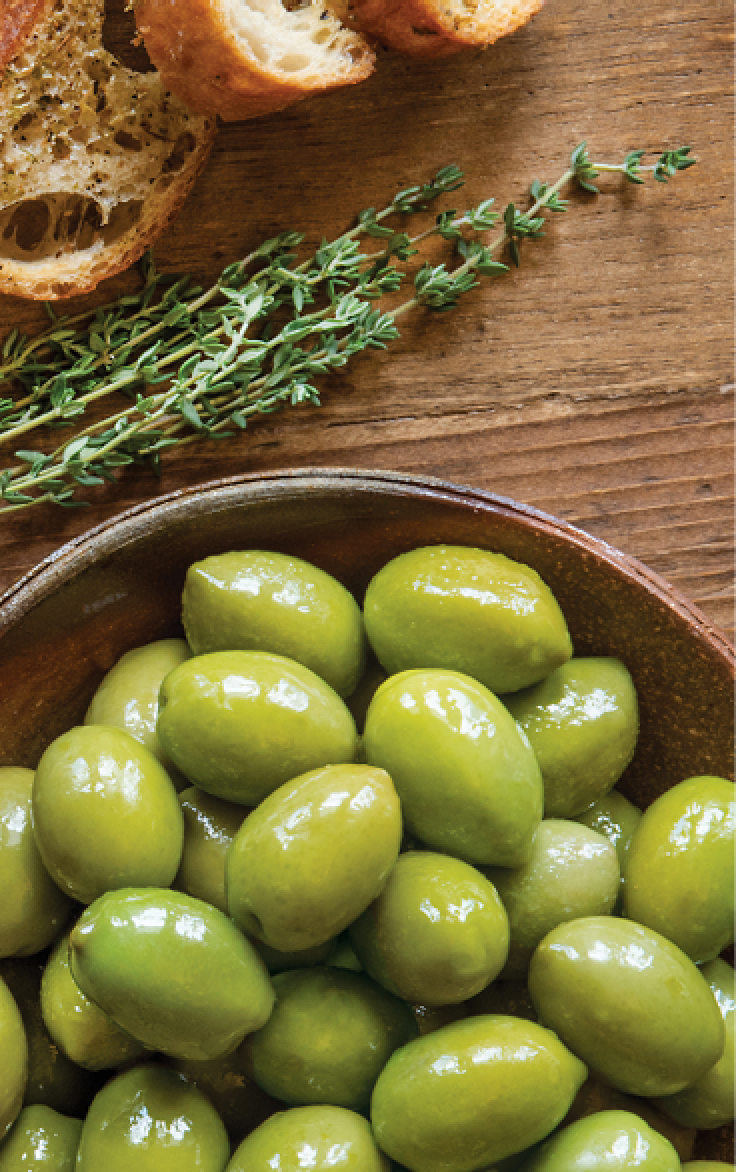
Every time I make spaghetti squash I wonder why I don’t eat it more often, like constantly-often. It’s delicious, easy to make, and its peak season lasts all through fall and halfway through winter (see our Winter Squash Guide for more about this). It’s also a nearly perfect pasta substitute for staying gluten free or cutting back on carbs.
The recipe here does use actual spaghetti as well as spaghetti squash to give the dish a little more substance and textural complexity, but it’s easy enough to use gluten-free pasta or remove the spaghetti altogether to accommodate any special restrictions. Spaghetti squash itself is nearly impossible to mess up, if you can cut the gourd in half and manage to get it into the oven; you’re already more than halfway to a supremely satisfying meal.
The nice thing about this pasta dish is that it’s almost entirely composed of bright, vibrant produce, between the squash, the leeks and the roasted peppers, it is nutrient-packed and healthy but still hearty and substantial enough to contend with most heavily-sauced spaghetti dishes. Meanwhile the lemon and sage instill a almost effervescent fresh flavor that somehow doesn’t seem out of place in the heart of winter.
Another reason I love working with spaghetti squash is that it tends to inspire a surge of culinary creativity. After making a spaghetti squash, one’s mind tends to fill with all kinds of ideas about how you’ll prepare it differently or more adventurously next time. Perhaps it’s the mild, nutty flavor that seems to go with everything, or the fact that it serves a dual role as both a pseudo-vegetable (squash are technically fruit) and a pseudo-grain (pasta) at the same time, or perhaps it’s the realization that comes with splitting open a squash and seeing something that looks deceptively, uncannily like spaghetti pour out. Perhaps it is this feeling after all, the feeling that the world of food is wider and stranger and more fun than you could have expected.
Ingredients
10 sage leaves
1 large spaghetti squash
1.5 cups leeks, white and light green parts
4 oz. spaghetti
canola, grapeseed or other high-heat oil
2 cloves garlic
juice of 1 lemon
1/2 cup Divina roasted red peppers
1 tablespoon butter
1/4 cup walnuts, chopped and toasted
a few pinches of red chile flakes
Instructions
• Preheat oven to 400
• Fry the sage. In a large skillet, add enough oil to well coat the bottom. Once the oil is hot and shimmering, test-fry 1 sage leaf. In a few seconds it should turn deeper green, remove and drain on a paper towel, it should become crispy as it dries. If it burns turn your heat down and test another. (I put 10 leaves in the recipe so you can mess up a few). Once your oil is at the right temp, fry them all. Drain and set aside. Turn off the heat and let the pan cool for a few minutes, then pour out excess oil, leaving just enough to continue to cook with.
• Cut Spaghetti squash in half length-wise and scrape out the seeds, drizzle flesh with olive oil and season generously with salt and pepper, place both halves cut-side down on a baking sheet and roast for about 50 minutes or until fork tender.
• Boil pasta in salty water for 8 minutes, or until al-dente. Drain, but reserve 1/4 to 1/2 cup of the starchy pasta water for later
• Meanwhile, turn your large skillet back up to medium heat. Add the leeks and a few pinches of salt & pepper. Cook until soft and translucent, then add the minced garlic.
• When your Spaghetti squash is finished roasting, scoop out the flesh and let cool for 10-20 minutes
• Add the pasta and the squash to the skillet, then add the peppers, a few squeezes of lemon, a pat of butter, and a few good pinches of salt, pepper, and red chile flakes. Toss everything together to coat. Add pasta water, 1/4 cup at a time if necessary to loosen the pasta.
• Once the pasta is thoroughly coated and all ingredients have been brought to temperature, turn the heat off. Taste and adjust seasonings, then transfer the pasta to a serving platter or bowls.
• Top with chopped walnuts and fried sage leaves.
• Serve with grated pecorino and/or balsamic vinegar, if you like.




